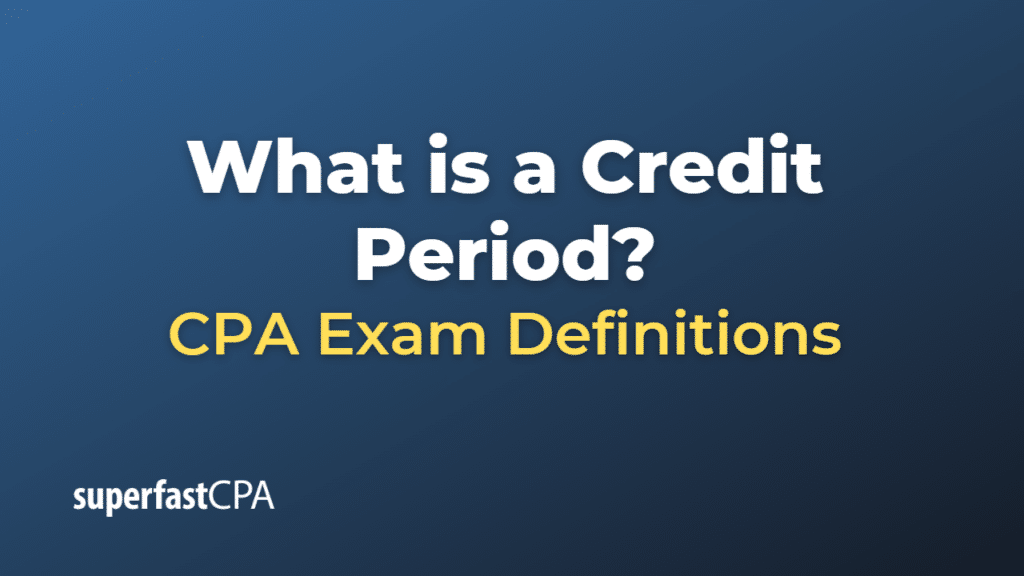Credit Period
A credit period is the length of time that a buyer is given to pay for a product or service after the purchase has been made. It’s essentially a short-term loan from the seller to the buyer, allowing the buyer to receive goods or services immediately but pay for them later.
The credit period is usually specified in the contract or agreement between the buyer and the seller, and it may also be stated on the invoice. It’s typically expressed in terms of days, such as “net 30” or “net 60”, which means the buyer has 30 or 60 days, respectively, to pay the invoice from the invoice date.
The length of the credit period can depend on various factors, including the industry, the relationship between the buyer and seller, the buyer’s creditworthiness, and the seller’s cash flow needs. Offering a longer credit period can be a competitive advantage for a seller, but it also means the seller has to wait longer to receive payment, which can impact cash flow.
If the buyer fails to pay within the credit period, the seller may charge interest or late fees, and/or take other actions to collect the amount due. On the other hand, some sellers offer discounts for early payment, which can encourage buyers to pay before the end of the credit period.
Example of a Credit Period
Suppose a retailer, “RetailStore”, orders $1,000 worth of goods from a wholesaler, “WholeGoods Inc.”. Upon delivery of the goods, WholeGoods Inc. issues an invoice to RetailStore with payment terms stated as “Net 30. This means that the retailer has a credit period of 30 days to pay the invoice.
If RetailStore pays the invoice within the 30-day period, it’s all settled as per the terms. However, if RetailStore fails to make the payment within this period, WholeGoods Inc. may charge interest or late fees on the amount owed, depending on the terms of their agreement.
Alternatively, WholeGoods Inc. might also offer an early payment discount to incentivize prompt payment. For example, the terms could be “2/10, Net 30”, which means RetailStore would get a 2% discount if they pay within 10 days. If RetailStore avails of this discount and pays within 10 days, they would pay only $980 ($1,000 – 2% of $1,000) instead of the full $1,000.
The credit period, in this case, assists RetailStore by providing them time to sell some of the goods to their own customers before they have to pay WholeGoods Inc., thereby aiding their cash flow. On the other hand, WholeGoods Inc. benefits by encouraging prompt payment and potentially enhancing customer relations.













